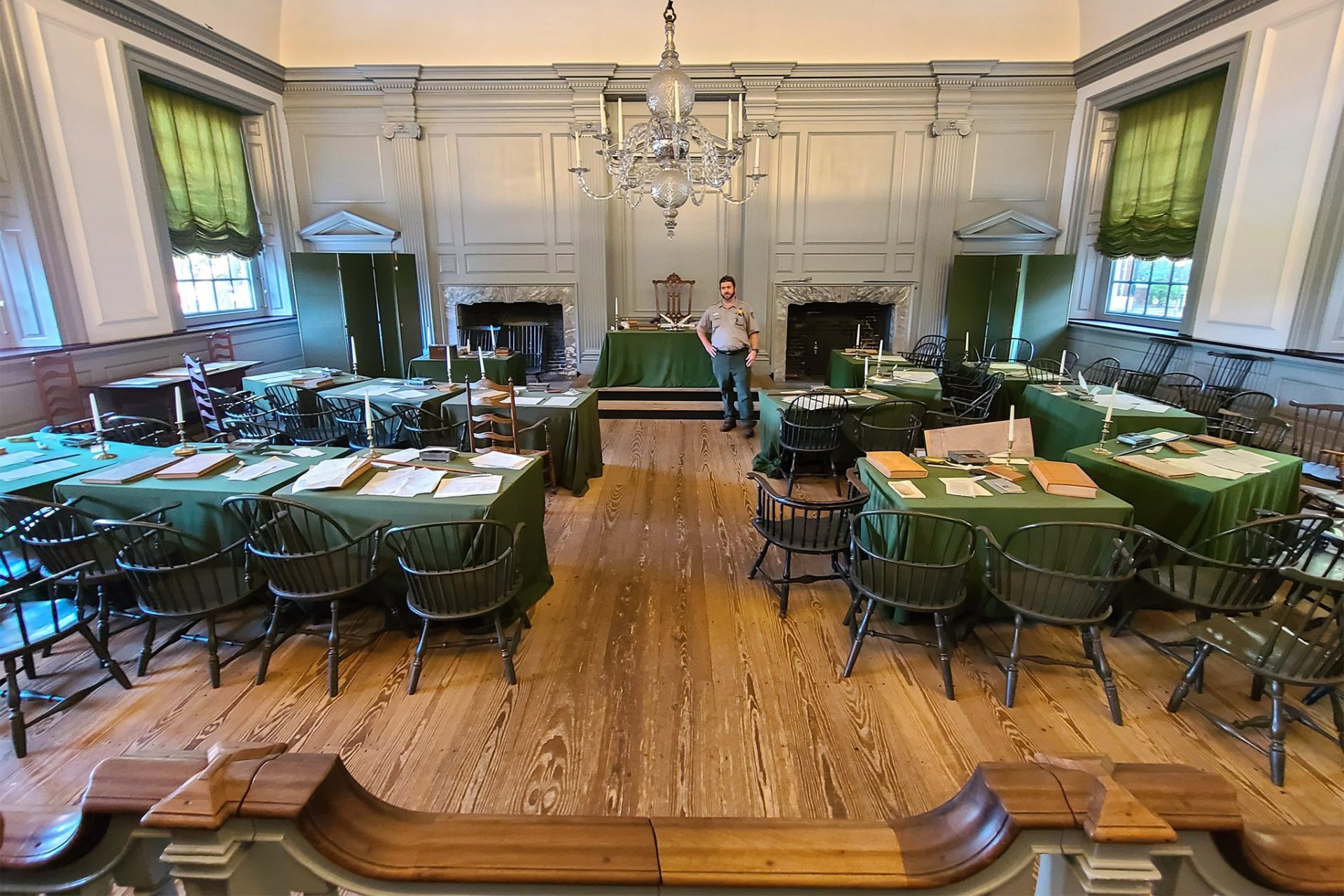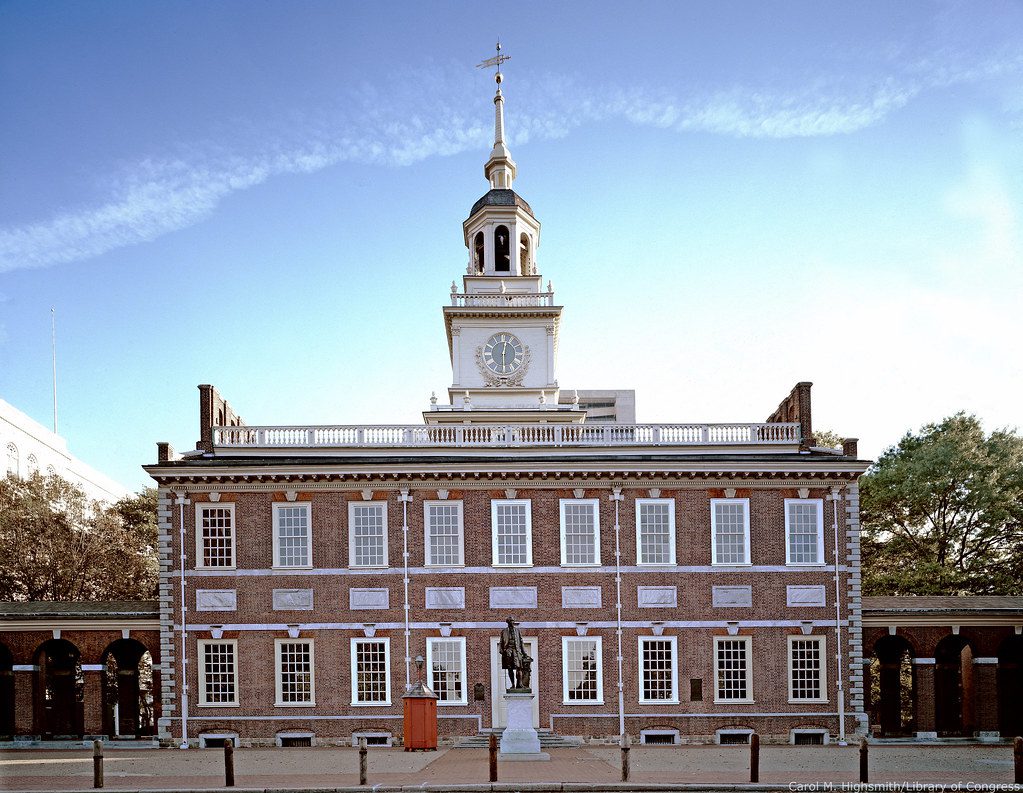The building was completed in 1753 as the Pennsylvania State House, and served as the capitol for the Province and Commonwealth of Pennsylvania until the state capital moved to Lancaster in 1799. It became the principal meeting place of the Second Continental Congress from 1775 to 1783 and was the site of the Constitutional Convention in the summer of 1787. A convention held in Independence Hall in 1915, presided over by former US president William Howard Taft, marked the formal announcement of the formation of the League to Enforce Peace, which led to the League of Nations and eventually the United Nations.
The building has undergone many restorations, notably by Greek revival architect John Haviland in 1830, and by a committee from the National Park Service, in 1950, returning it to its 1776 appearance.

Independence Hall is, by every estimate, the birthplace of the United States. It was within its walls that the Declaration of Independence was adopted. It was here that the Constitution of the United States was debated, drafted and signed. That document is the oldest federal constitution in existence and was framed by a convention of delegates from 12 of the original 13 colonies. Rhode Island did not send a delegate. George Washington presided over the debate which ran from May to September 1787. The draft comprising a preamble and seven Articles, was submitted to all thirteen states and was to take effect when ratified by nine states. On June 21, 1788, New Hampshire, the ninth state, approved it and it became effective in March 1789.
Notable among the document’s many innovative features is the separation of powers among the legislative (Congress), executive (President), and judicial branches of government. Also important is that the Congress was split into two houses, the upper house (originally in the upper floor of adjoining Congress Hall), and the lower house (main floor of Congress Hall); the first gave equal power to all the states regardless of size and the second gave proportional representation according to size.
You have to imagine the debates between the large and small states each attempting to form a government favoring them. You also have to marvel that this compromise was reached at all — a tribute to the extraordinary minds that were working together to make a new nation that could survive and renew itself in the face of unforeseeable obstacles.
According to en.wikipedia; ushistory.org. Source of photos: internet








